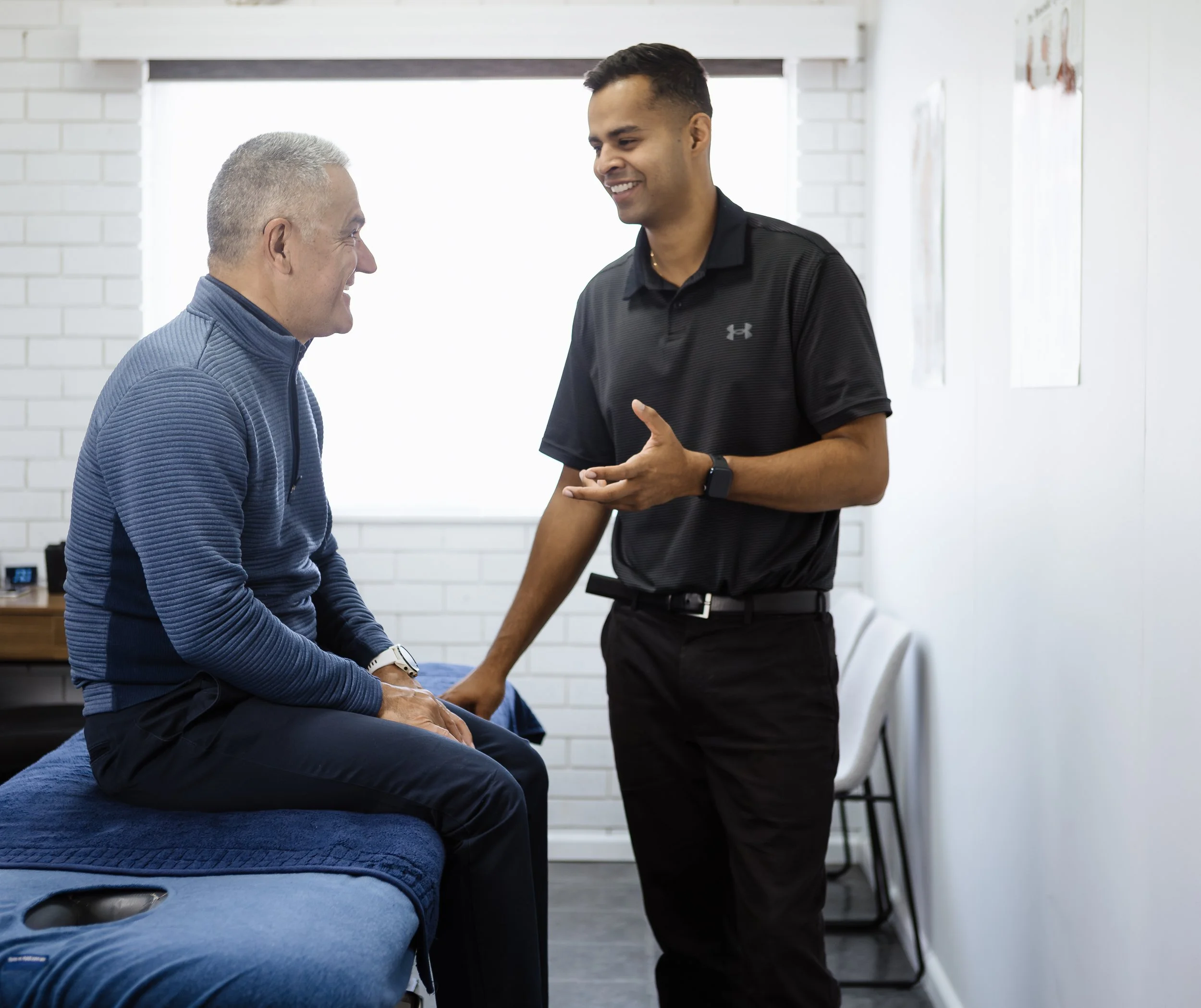What is Osteopathy?
Your Body, Connected.
Osteopathy is a unique and holistic (whole-body) form of manual therapy that focuses on treating the whole person, not just the symptoms. It is based on a simple but powerful principle: your body’s structure and its function are deeply interconnected.
When your body is in alignment and moving freely, it has a remarkable natural ability to heal itself. Osteopaths use their hands to diagnose and treat areas of strain, restriction, or tension that may be preventing your body from achieving this state of balance, helping you return to optimal health and function.
The Core Principles of Osteopathy
Our approach is guided by four key principles established over a century ago:
The Body is a Unit: The body is an integrated whole—mind, body, and spirit. A problem in your ankle can affect your knee, hip, and even your back. We look for the root cause of your pain, which may be far from where you actually feel it.
The Body contains Self-Healing Mechanisms: Your body is constantly working to maintain health and fight disease. We aim to remove the obstacles (like joint restrictions or muscle tension) that are impairing this innate healing ability.
Structure and Function are Interrelated: If a structure in your body (like a joint or muscle) is damaged or misaligned, it won’t function properly. Conversely, if function is impaired (e.g., from poor posture), it can eventually change the structure. Osteopathy works to restore both.
Rational treatment is based on the understanding of the first 3 principles: This means that treatment is based on the above principles when discussing, assessing and treating a client.
What do Osteopaths do?
Using highly developed sense of touch (palpation), we will:
Listen to your story and understand your health history.
Assess your posture and movement to see how your body is functioning as a whole.
Gently feel for areas of tissue strain, joint restriction, and muscle tension.
Use a range of gentle, hands-on techniques to address these issues, which may include:
Soft tissue massage and stretching
Gentle joint articulation and mobilisation
Muscle energy techniques (MET)
Visceral techniques (addressing mobility of internal organs)
The goal is to restore mobility, reduce pain, improve circulation, and support your body’s own mechanisms for health.
A Brief History: The Origins of Osteopathy
Osteopathy has a rich and fascinating history. It was founded in 1874 by Dr. Andrew Taylor Still, a physician in the American state of Missouri.
Frustrated by the limitations of 19th-century medicine, particularly after losing three of his children to spinal meningitis, Dr. Still began searching for a better way. He deeply believed that the body possessed its own pharmacy and that the role of a therapist was to facilitate the body’s ability to heal.
He developed a system of diagnosis and treatment that focused on the musculoskeletal system as a key element of health. The name "Osteopathy" comes from the Greek words osteon (bone) and pathos (suffering or disease).
The profession grew and evolved, establishing its first school in Kirksville, Missouri. It was introduced to Australia in the early 20th century and has since become a well-established and government-regulated healthcare profession. Today, Australian osteopaths complete a minimum of four and a half years of university training in anatomy, physiology, pathology, and osteopathic techniques, ensuring the highest standard of care for our clients.
While the techniques have been refined over 150 years, the core philosophy remains the same: to treat the whole person, not just the disease.
Ready to Experience the Benefits?
If you’re curious about how Osteopathy could help you, we invite you to book your Initial Consultation with us below. We’ll take the time to understand your story and create a personalised plan for you to get you back doing what you love most.

